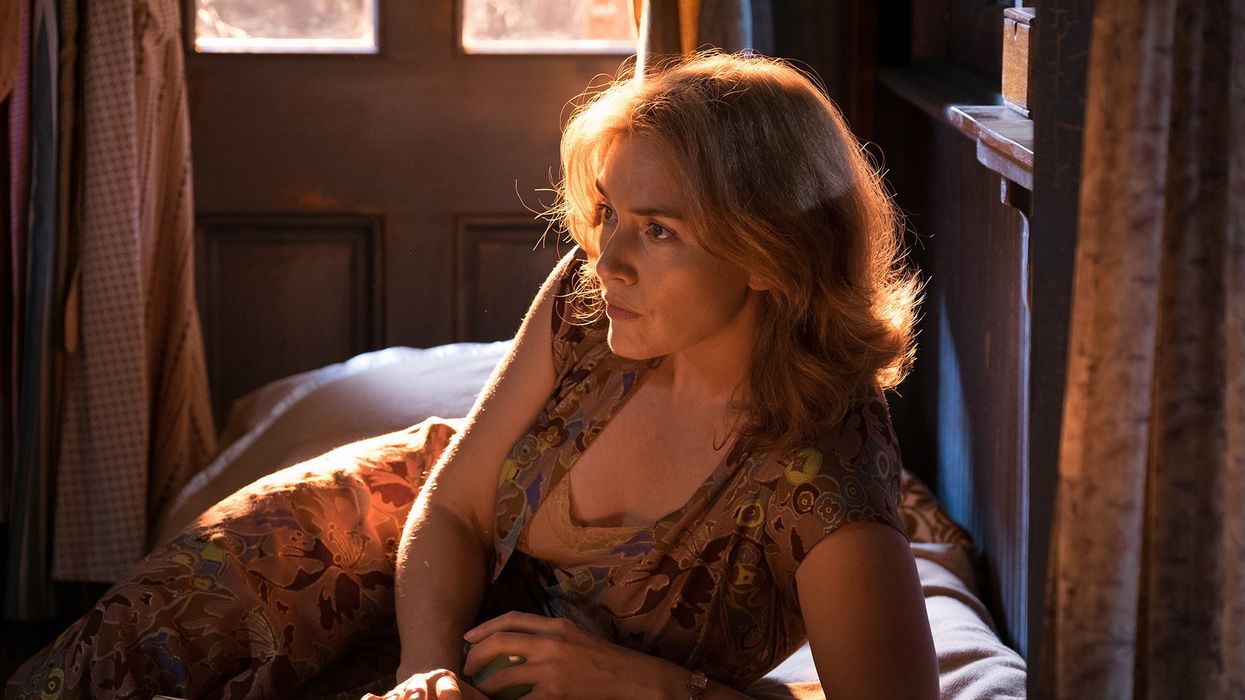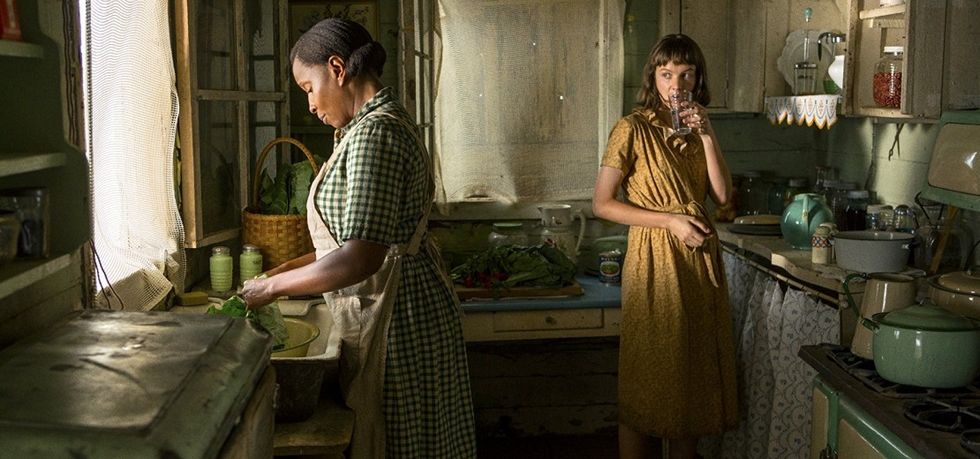Watch: The Most Breathtaking Cinematography of 2017
From Deakins and Storaro to relative newcomers, the work of these DPs defined a gorgeous year in cinema.

The cinematography that captured our imaginations this year is a balance of the sweeping and the intimate, the urgent and the languid. In the year when many have predicted that Roger Deakins may finally win an Oscar, we naturally had to include his masterwork Blade Runner 2049, but our list also includes everything from highly stylized period pieces to documentaries to understated narratives that feel like documentaries.
To compile our list, we asked No Film School writers to submit a single film that stood out visually above all others for them this year. Excerpts from each were then cut into a supercut by video essayist Nelson Carvajal of Free Cinema Now. See his gorgeous video, and read our thinking behind each inclusion, below.
The Beguiled
DP Philippe LeSourd
Set during the Civil War at a southern school for girls, The Beguiled walks the line of looking like a period fashion spread right up to the edge, but never goes over. The film creates a clear, definite, and controlled sense of time and place that doesn’t interfere with our ability to stay engaged with the narrative. —Charles Haine
Blade Runner 2049
DP Roger Deakins
If fans of the original Blade Runner and cinephiles alike could have chosen the cinematographer to pick up the mantle from the late Jordan Cronenweth for Blade Runner 2049, Roger Deakins would likely have been their first choice. Together with director Denis Villeneuve for the third time, Deakins created expansive, gorgeous vistas of dystopian wasteland, intimate close-ups of impossible love, and with the help of visual effects, sometimes both in the same shot—see the massive hologram of Joi reaching out for K alone on a city bridge. The experience is mesmerizing. —Christopher Boone
The dystopic future has never looked so beautiful. Combined with a stunning production design, Roger Deakins inserts audiences into a familiar and bleak world while simultaneously showing us the absolute awe and spectacle of what it means to be a cog in this society. Take a still of just about any frame and you'll find a beautiful image, but the real art is how Deakins' visuals give audiences the chance to dive even deeper into the stories of K and Deckard. —Hawkins DuBois

Casting JonBenét
DP Michael Latham
For an equally haunting and comedic documentary about the cinematic recreation of one of America's most infamous murder cases, it’s only right for Casting JonBenét to feature the year's most creatively diverse cinematography. Part speculative detective hour, part therapy session, Kitty Green’s new film is a tale of two parts. Assembling actors from the Colorado area where the JonBenét Ramsey murder took place some 21 years ago, the film is as much about the casting of this experimental dramatization as it is the Fincher-esque recreation itself.
As the actors reveal their backstories and extend opinions on the case, they’re filmed in a 4:3 aspect ratio that brings us in close. Interrogation as auditioning process? When we see them again, in Green’s fictional re-telling that never came to be, they’re framed in a sleekly polished letterbox format, in character, prompting the audience to do a quick double take. Shot by Green regular Michael Latham, the film’s cinematography serves as a contextualization of events still very much shrouded in mystery. —Erik Luers
Chasing Coral
DPs Jeff Orlowski & Andrew Ackerman
To say the team who made Chasing Coral was dedicated to the image is an understatement. For this feature documentary to succeed, the film needed to capture irrefutable visual evidence that would tell people the story of mass coral bleaching in the face of rising ocean temperatures. Director Jeff Orlowsky and Cinematographer Andrew Ackerman first had special underwater cameras made to capture timelapses of coral dying. When bleaching events started happening at an unprecedented rate, the team began diving daily to manually capture the evidence. There result is at once a beautiful and tragic intersection of science and storytelling, and is a testament to the power of the moving image. —Oakley Anderson-Moore

Columbus
DP Elisha Christian
Columbus has some of my favorite cinematic images. These shots are largely static, communicating this interesting stillness that isn't quite tranquil and isn't quite stagnant; it's somewhere in between. It's a perfect visual representation of the two key characters in Kogonada's film, each of whom is stuck in a place they don't want to be, but taking in the architectural sights while they wait for something, anything, to move. —V. Renee
Dunkirk
DP Hoyte van Hoytema
Let’s just talk about Hoyte van Hoytema. Have you seen Her? It’s visual Shakespeare. But color palettes alone don’t make great cinematography. Neither do lenses, lighting or composition. If you notice them you’re not immersed in the story—you’re looking at a painting some poser is trying to add to their reel. To say Hoyte van Hoytema is adept doesn’t do him justice. He is simply the shit.
We’re not gonna sit here adjective-ize his work on Christopher Nolan’s 70mm World War II spectacle Dunkirk like we’re submitting ourselves for a Folio award. It comes down to this: You see van Hoytema’s name attached to a movie and you go see it because you know you’re not going to lust over anything besides the narrative in front of you. You’re not going say to yourself, “Oh, cool, great use of a Technocrane there.” No cinematographer wants that—ever. And when you finally do achieve this understanding as a lenser you might even hear people calling you one of the greatest of a generation.—Daron James
The Florida Project
DP Alexis Zabe
If Sean Baker’s primary goal in making The Florida Project was to capture an representation of the child’s perspective, then he owes a great deal to his cinematographer Alexis Zabe for its success in doing so. Time and time again Baker has told the press how The Little Rascals was a major influence on his film. The TV show, of course, was famous for capturing the everyday shenanigans of a group of young rapscallions. It’s Zabe’s and Baker’s decisions concerning camera placement, the angle of the shot, and the transformative framing of run-down locations into vibrant subjects of wonderment that make us feel as if we’re just another member of protagonist Moone’s gang. Baker has also mentioned that shooting on 35mm film was a direct result of being pigeonholed as the iPhone guy, and Zabe’s mastery of the medium is certain to give the auteur that distance he desires. Every frame of the film is no less than stunning. —Jon Fusco

Good Time
DP Sean Price William
Good Time teems with manic energy, breathless performances, and neon lights. Watching it is a relentless experience—much of it owing to the film's turbocharged cinematography. "I like to electrify the filmed image, and colors—especially strong colors—look great on film," Sean Price Williams told Kodak. "Film sees what is in front of you on set; it’s alive."
Williams' choice of 2-perf 35mm KODAK VISION3 500T Color Negative Film 5219 dovetailed well with the Safdies' gritty, scrapyard DIY ethos. Williams shot most of the film in close-ups, which, combined with the fast-paced action of the thriller, creates a claustrophobic effect. The audience is forced to stay with the main characters as they attempt to outrun their fates; there is no relief from the heart-pounding panic that characterizes this surreal fever-dream-turned-nightmare. With so few wide shots for context, we feel the very vertigo of running from the law in the underworlds of New York. —Emily Buder
Kedi
DPs Alp Korfali, Charlie Wuppermann
Unless you are a bona fide feline lover, watching 80 minutes of cat footage probably sounds boring to you. However, due to the brilliant work of its cinematographers, 2017’s Turkish street cat documentary, Kedi, is utterly engaging from start to finish. The POV camerawork combined with intimate close-up photography immediately brings you into the world of the film’s stars. There were many, many beautiful films this year, including many with more style and technique than Kedi. But ultimately, we must remember that cinematography is a tool for storytelling. And the way in which Kedi’s storytellers used the image to build a gripping narrative is unmatched. —Sophia Harvey
Menashe
DPs Yoni Brook, Joshua Z Weinstein
The success of Joshua Z Weinstein’s Yiddish-language drama comes partially from it being so intimately and sympathetically shot that diverse audiences can relate to its protagonists even though it’s set within Brooklyn's insular and little-known Hasidic Jewish community. As a testament to the film’s realism, an audience member at its Sundance premiere complimented the “beautiful documentary,” despite the on-stage team having just described the process of crafting the narrative’s script. Both Weinstein and the film’s cinematographer, Yoni Brook, do in fact have backgrounds in shooting documentaries, a skill set which they clearly brought to bear in this sensitively-lensed story. —Liz Nord

DP Rachel Morrison
Here are words that come to mind about the cinematography of this film: lush, sensual, tactile. The camerawork conveys an intimacy that builds a connection to the characters. One feels down in the dirt with them, and immersed in their story. No "gritty handheld" approach was employed, but somehow a lyrical sort of handheld. The depth of field choices and the rich yet natural lighting add to the narrative and the sensory experience. The film found that balance of beautiful camerawork that doesn't take a viewer out of a story, but deepens their dropping into a world. —Lauretta Prevost
Wonder Wheel
DP Vittorio Storaro
While Woody Allen’s latest film is not among his best, Wonder Wheel possesses some of the year’s most sumptuous visuals. This is his second collaboration with master cinematographer Vittorio Storaro. A three-time Oscar winner for Apocalypse Now, Reds, and The Last Emperor, Storaro also shot Allen’s gorgeous Café Society (Cannes 2016).
In Wonder Wheel, Storaro reimagines Brooklyn as a refulgent daydream. Lust translates into literal luster. The Coney Island waterfront is a treat: every square inch of beach is packed with people like a 1950’s Where’s Waldo page. Bodies glow with vivid, surreal colors—reds, yellows, oranges. In a key moment of betrayal, a shadow slinks across a character’s face. Even as the film sags, Storaro’s images transcend. Each carefully composed frame heightens meaning, lingering long after the story’s end. Even if you’re not keen on Allen, this film is worth revisiting on mute, simply to spend more time inside Storaro’s visual poetry. —Dylan Dempsey
See all of our 2017 Year-in-Review coverage.
Featured image from 'Chasing Coral'











![Ethos, Pathos, Logos: 20 Effective Ways to Advertise [Infographic]](https://nofilmschool.com/media-library/ethos-pathos-logos-20-effective-ways-to-advertise-infographic.jpg?id=34064614&width=600&height=600&quality=90&coordinates=560%2C0%2C0%2C0)
